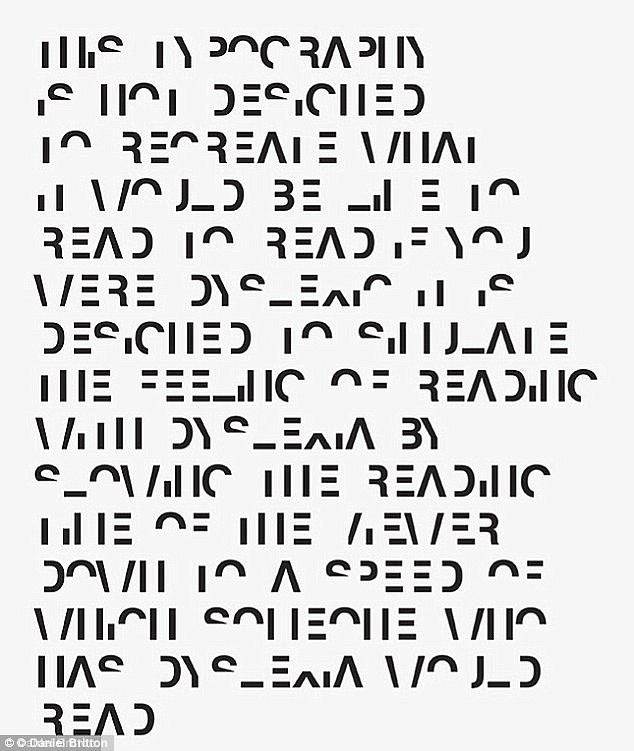Have you ever thought what it feels like if you have dyslexia? Probably, it is something like this:

Or like this. The later is a simulation which was specially created by a developer Victor Windell to let people see what it’s like to have severe dyslexia.
Dyslexia is a neurologically-based condition which leads to learning difficulty. It is quite widespread nowadays. According to Dyslexia International, at least one in 10 people has some form of dyslexia. It can cause problems with reading, writing and spelling and, consequently, poses a problem for language teachers too.
Cases of dyslexia vary from each other. The symptoms might look like a struggle to copy information from the board, skipping lines or words in a text while reading, or flipping letters like ‘p’, ‘b’ and ‘d’. It can also be spotted in a slow reading of familiar words, a tendency to write words as they sound, difficulties pronouncing certain sounds, and many more.

When a dyslexic teenager comes to a classroom for the first time, they might be easily ‘labelled’ as having no aptitude for languages or, even worse, hopeless. But is it really so? (spoiler: no). Dyslexia is the result of neither poor schooling nor stupidity or lack of motivation. However, if you have a dyslexic student, it means that from now on you should be ready to give them a helping hand.
Slow down
Dyslexic teens need more time to process and decode the information, especially when they have to deal with reading. Decoding the meaning is so hard that they often don’t have time for doing the while-reading or after-reading tasks. So, when you plan a lesson, bear this in mind. Allocate more time for preparation or let them choose the question to answer by themselves. This way, they will feel more confident. One more technique to use is asking questions during reading to check if students are on track with understanding the main idea and key issues.
If you have a grammar lesson, break the information into chunks. Even at higher levels, more than one grammar structure at a time might be a huge challenge for dyslexic students, especially when it’s followed by a number of gap-fill exercises.
Provide visual support
Visual support is the biggest assistance for students with this kind of learning difficulty. For writing classes, give out the handouts with notes to help those who struggle with copying information from the board. You can also create mind-maps to summarize the main ideas of the text or to prepare for writing an essay or a story.
Flashcards will work well with dyslexic teenagers as well. With their help, you can visualise a listening task or provide one more mental connection between a word and its written form. Encourage students to use picture dictionaries to better remember and visualise words and phrases. Use colour-coding. That is what linguists Kormos and Smith say about this technique: ‘we can decide to use red for the subject of the sentence, blue for the predicate and green for the object (e.g. The boy bought a book). If this kind of colour-coding is consistently followed, students will soon learn that words in red express the agents of actions, blue stands for the action itself, and green represents the object of the action’.
One more extremely useful tool to use is fonts specially designed with dyslexic students in mind. These fonts like OpenDyslexic or Dyslexie are open source and can be installed into any text processor. They usually imply larger spaces between the words and letters that are uniquely shaped and easier to distinguish. Punctuation marks and capital letters are bold, highlighting the breaks, endings, and beginnings of phrases. Nowadays even some coursebooks such as Insight provide sets of dyslexic-friendly texts in their supplementary resources.
Lower anxiety
Working with dyslexic kids is, in some way, easier than working with teens with their vulnerability and fear of looking stupid. So, it’s obviously a great idea not to draw too much attention to their struggle. Let them, for instance, use pens with erasable ink or pencils even if your classroom policy requires a pen only on some occasions. In this way, they can correct any piece of not well-written text without crossing it and delivering messy writing.
Reading aloud doesn’t seem a good idea either, especially when we talk about an open-class procedure when everybody is listening to you. If you have to do reading out loud with lower levels, you can give a task of practising at home and, then, presenting a piece of reading in the class. Also, choral reading can be done from time to time. It will definitely lower the level of anxiety for dyslexic students. And for shy ones, by the way.
One more thing to mention, don’t overdo peer correction or self-correction. Sometimes students can spot a non-existing mistake or correct a real one in the wrong way. It is confusing for everyone, but especially for those who have dyslexia. When you check a writing task, write the correct spelling or form for students rather than ask them to self-correct. So, let them rely more on the teacher.
Unfortunately, dyslexia is chronic and cannot be cured. However, teachers can really make a difference by choosing methods and strategies that will help teenagers perform better in the classroom and outside it.






 Вероника Аветисян
Вероника Аветисян 
 Маргарита Аветисян
Маргарита Аветисян 


